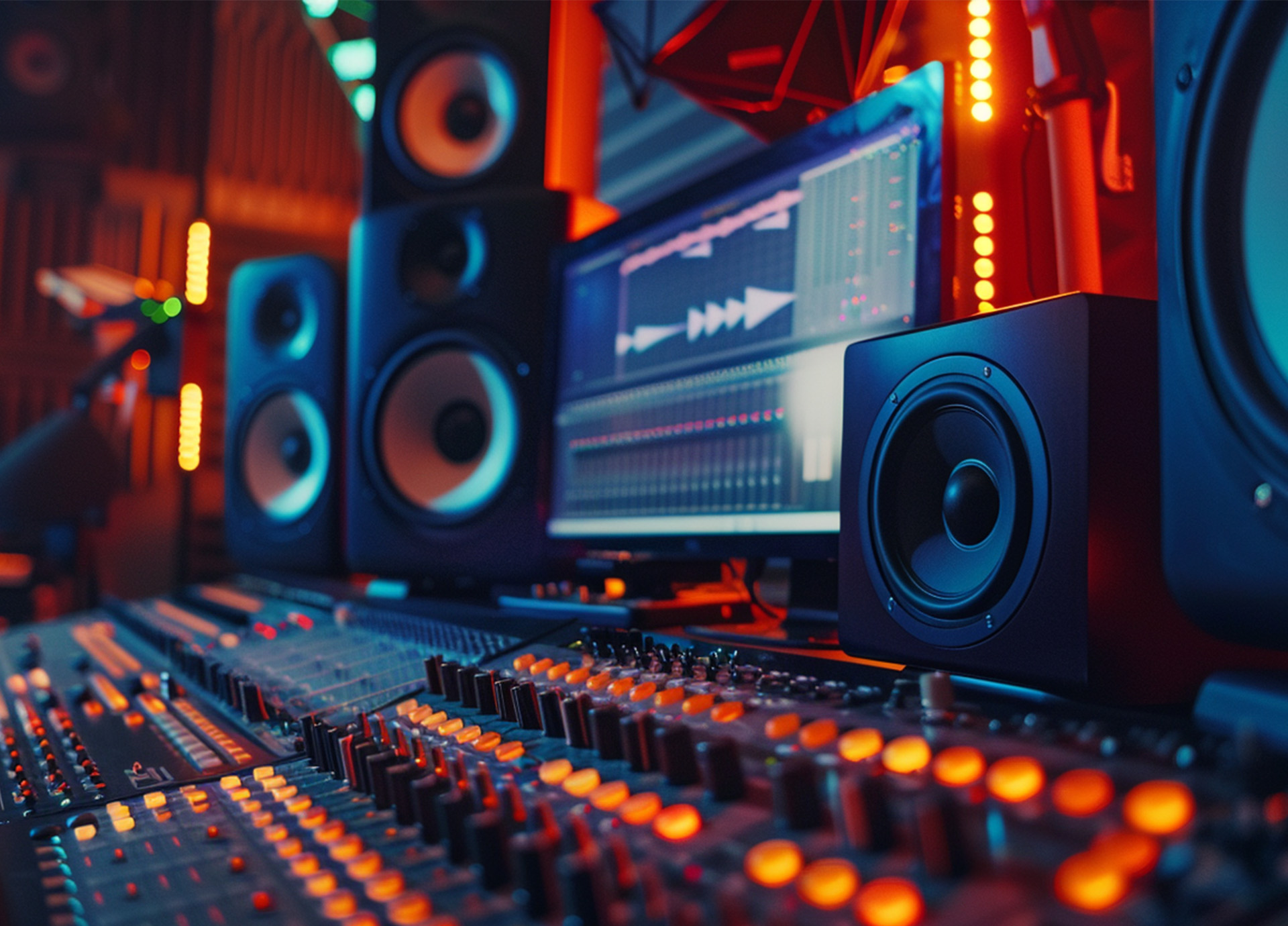
Do High-End Studio Monitors Make You a Better Producer?
The age-old debate – gear vs. skills. In the realm of music production, studio monitors often take center stage in this discussion. Does throwing down a hefty chunk of change on a pair of high-end monitors automatically elevate your production prowess? Or can you achieve greatness with a more budget-friendly set?
The truth, like most things in audio, lies somewhere in the sweet spot between the two extremes. Let’s delve into the world of studio monitors, exploring the impact of price on features and ultimately, on your productions.
The Role of Studio Monitors
Studio monitors are designed to provide an accurate representation of audio, allowing producers to hear details that might be missed on regular speakers. The accuracy of studio monitors ensures that any mix translates well across different playback systems. This is crucial for making informed decisions about EQ, compression, and other aspects of audio production.
Unveiling the Price Tag Breakdown
Studio monitors come in a vast array of price points, ranging from a few hundred dollars to eye-watering sums that could buy a decent used car. So, what exactly justifies the price hike? Here’s a breakdown of the key factors:
- Components: High-end monitors often boast premium drivers and amplifiers. These components translate into a more accurate representation of the audio spectrum, with better transient response and lower distortion. This allows you to hear subtle details in your mix that might be masked by cheaper drivers.
- Flat Frequency Response: The goal of studio monitors is neutrality. They should reproduce sound as faithfully as possible, without coloring it with boosted bass or exaggerated highs. Expensive monitors typically achieve a flatter frequency response, allowing you to make mixing decisions based on the true nature of the sound, not the speaker’s inherent sonic signature.
- Room Response: While not directly a monitor feature, expensive models often come with advanced room correction features. These help you tailor the monitor’s sound to your specific listening environment, which can be a game-changer, especially in untreated rooms.
- Durability and Build Quality: High-end monitors are built to last, with robust construction and premium materials. This ensures they can handle the rigors of professional use and deliver consistent performance over a longer lifespan.
The Allure of Accuracy: The Producer’s Advantage
So, how do these factors translate into better production results? Here’s how expensive monitors can potentially elevate your game:
- Improved Clarity and Detail: With a more accurate representation of your mix, you can hear subtle nuances in instruments and vocals. This allows you to make informed decisions about EQ, compression, and other processing techniques, ensuring a more polished and professional sound.
- Better Mixing Decisions: A flat frequency response prevents you from being misled by hyped bass or exaggerated highs. This allows you to create mixes that translate well across different listening environments, from car speakers to high-end audio systems.
- Reduced Listening Fatigue: Premium drivers and amplifiers typically translate into a smoother listening experience. This is crucial for long mixing sessions, as ear fatigue can significantly impair your ability to make accurate judgments.
The Art of Listening: Skills over Price Tag
However, throwing money at the problem isn’t a guaranteed path to sonic nirvana. Here’s why relying solely on expensive monitors might not be the best approach:
- Untreated Rooms: Even the most accurate monitors can be rendered useless in an untreated room. Room acoustics play a crucial role in how you perceive sound. Reflections and resonances can color the sound and mask important details, regardless of the monitor’s capabilities.
- Learning to Hear: Expensive monitors are a powerful tool, but they don’t magically bestow upon you the ability to use them effectively. Mastering the art of critical listening takes time, practice, and an understanding of audio principles.
- Reference Tracks and Multiple Listening Environments: Even with the best monitors, it’s crucial to reference your mix on different speakers and headphones. This helps you identify areas that might need tweaking for translation across various listening environments.
The Stevie Wonder Effect: There are countless examples of legendary producers who created phenomenal music without high-end studio monitors. Take Stevie Wonder, for instance. Despite being visually impaired, he revolutionized music production with a keen ear and a deep understanding of sound. His story serves as a powerful reminder that the most important tool in any producer’s arsenal is their ears and their skills, not necessarily the price tag on their monitors.
Finding the Sweet Spot: Value for Your Budget
- Focus on Your Skills: Remember, the gear is just a tool. Invest time and energy in honing your production skills. Learn about mixing techniques, EQ, compression, and mastering. The better you understand these concepts, the more effectively you’ll be able to use any monitor setup.
- Utilize Reference Tracks: Reference tracks are mixes you admire and use as a benchmark for your own. Compare your mix to the reference on different speakers and headphones, focusing on elements like clarity, balance, and overall feel.
- Collaboration and Feedback: Get feedback from other producers and musicians on your mixes. This can provide valuable insights you might miss on your own.
The Good, the Bad, and the Budget-Friendly: Real-World Examples
Here’s a quick look at some popular studio monitors across the price spectrum:
- High-End (>$1,000 per pair): These monitors boast top-of-the-line components, advanced room correction features, and pristine sound reproduction. Examples include Neumann KH 310 A, Focal Twin 6 Be, and ATC SCM250ASL Pro.
- Mid-Range ($500-$1,000 per pair): These monitors offer a good balance of price and performance, with excellent sound quality and reliable build. Examples include Yamaha NS10M Studio Monitors, Adam A7X, and Kali Audio LP-8.
- Budget-Friendly (<$500 per pair): While some sacrifices might be made in terms of high-end features, there are still plenty of affordable options that deliver surprisingly good sound quality. Examples include Mackie MR624, KRK G4, and PreSonus Eris E3.5.
The Takeaway: Don’t let the price tag of your studio monitors discourage you. By focusing on room treatment, developing your listening skills, and utilizing reference tracks, even affordable monitors can be a powerful tool in your production journey. Remember, the most important factor is your passion, dedication, and willingness to learn and grow as a producer.
Bonus Tip: Consider investing in a good pair of studio headphones. Open-back headphones can offer a surprisingly accurate representation of your mix, especially for referencing stereo images and high frequencies.
Ultimately, the best studio monitors for you are the ones that fit your budget, sound good to your ears, and translate well across different listening environments. With dedication and practice, you can achieve great results regardless of the price tag on your speakers. ![]()
Subscribe To Our Magazine!
Get every issue of Psychedelic Magazine delivered straight to your inbox every month - for free! We do not spam!
You have subscribed successfully!
Some error occured
Please fill all the required * fields.








